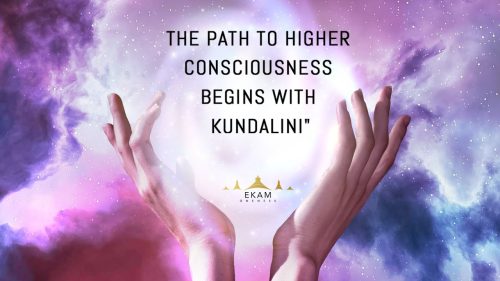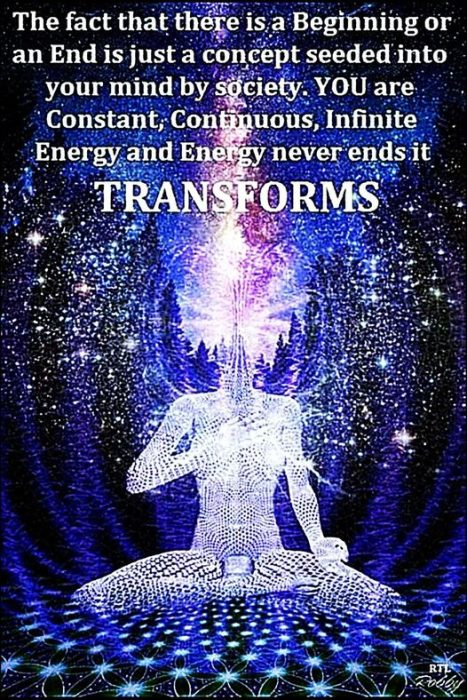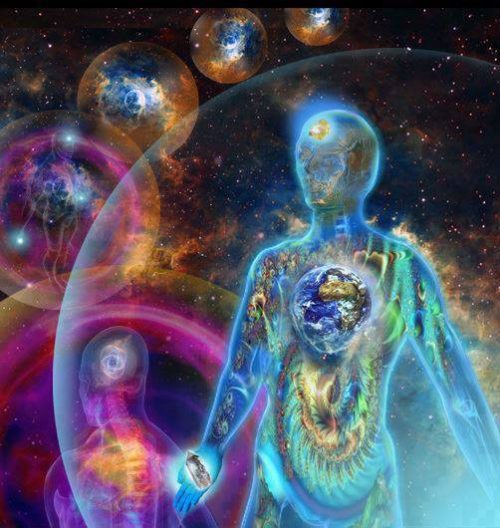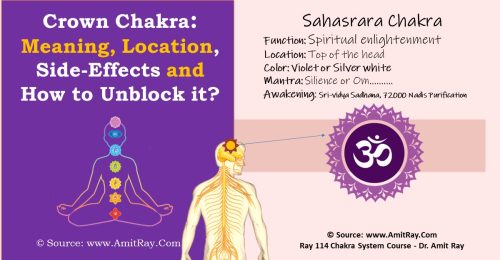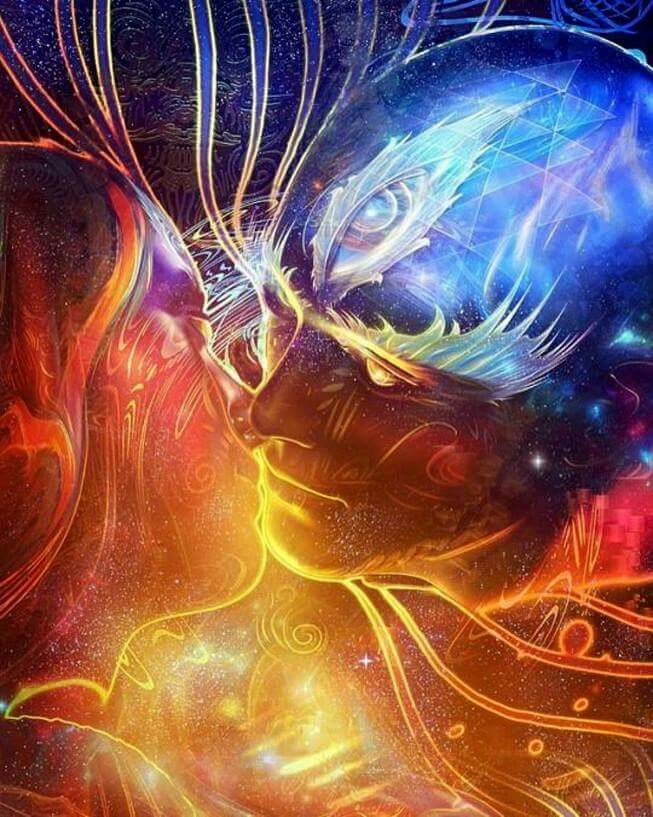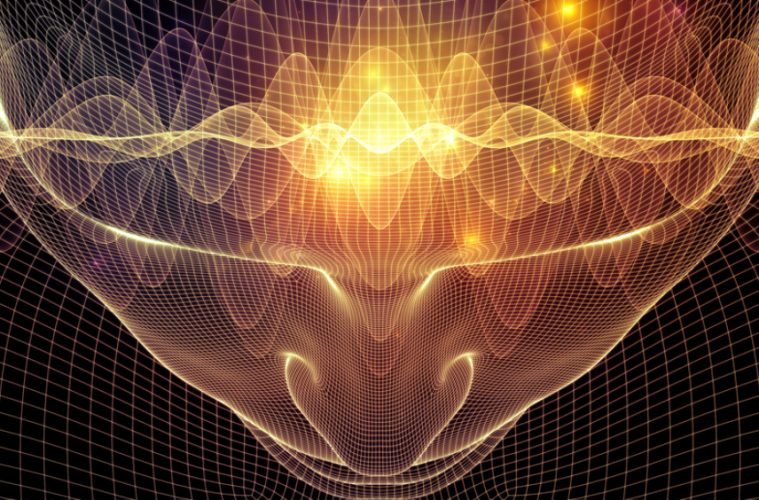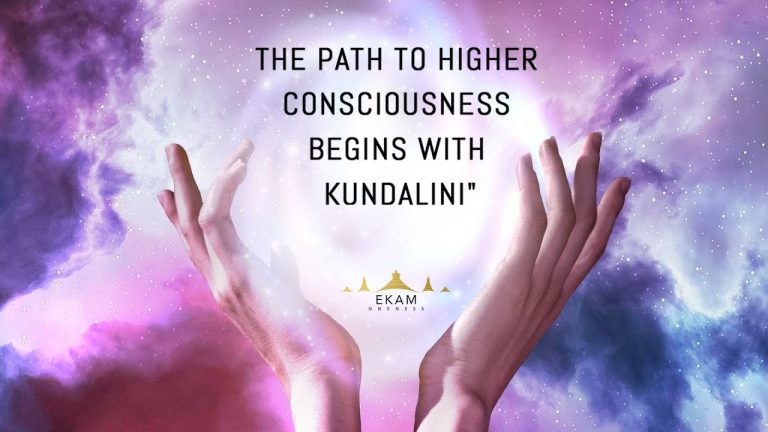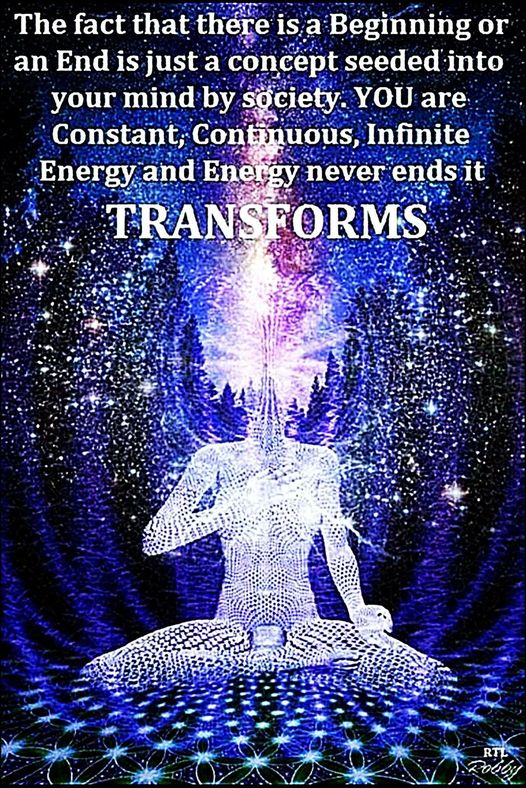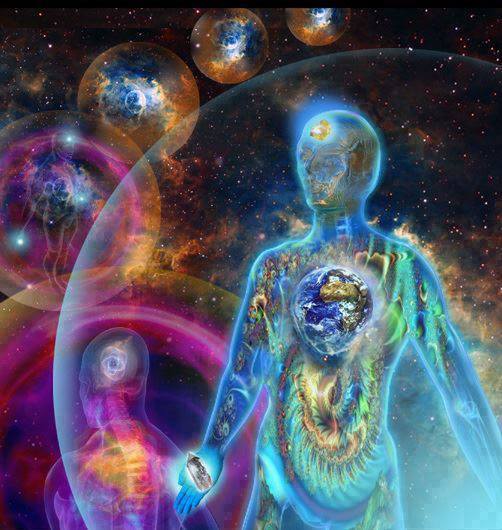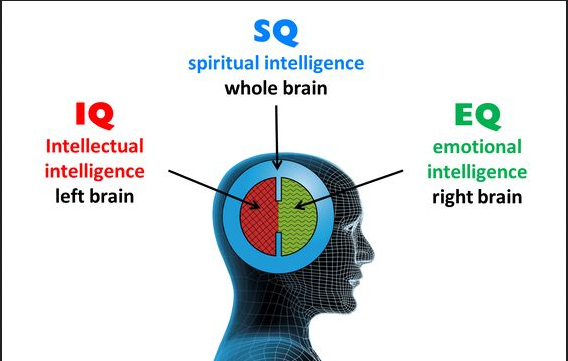
What are the 5 stages of consciousness?
Body Consciousness
A human being is a unity of five beings – the five bodies. Each body has its own kind of consciousness, and each is evolving (or involving) independently. Body consciousness is the collective consciousness of all the atoms and molecules within a body (subtle or physical). The human monad must leam to gain control over his five bodies and integrate them into a co-operative unity. Personality disorders result if one or more of the bodies are damaged or out of balance from the rest.
The consciousness of our five bodies is synthesised by the first triad into the unified consciousness that is our personality. The triad enables the monad to simultaneously perceive the activity within all of its bodies. The triad prevents us from acting like we are five separate beings. The monad utilises the mental molecule when it is focused on an intellectual matter, the emotional atom when it is caught up in emotion or desire, and the physical atom when it is focussed on physical activity.
The monad’s consciousness within a body makes it appear like it has intelligent consciousness, but without the monad our various bodies are just collections of secondary or tertiary matter, and possess only very basic levels of consciousness. Tertiary matter is able to learn basic and repetitive functions, which enable the physical etheric body to perform routine tasks such as circulating the blood and digesting food without direct input from the monad. The secondary matter of the emotional and mental bodies possesses an even lower level of consciousness which can only respond to external influences. The emotional atom and mental molecule that control these two subtle bodies are tertiary matter, so they too can leam simple behavioural patterns. Many people react automatically to everyday events in their lives because their triad atoms have learnt how they normally respond in given situations. They rarely take the time to lucidly think before they act, but instead allow their subtle bodies to respond automatically and so govern their behaviour.
This is like living on autopilot, which is not really living at all because life passes them by while their self is half asleep. Most people don’t even realise they live like this because it has become their normal way of life. It takes a single conscious act of will to break a behavioural pattern once, but it takes repeated conscious acts of will to break a pattern of behaviour for good. This is the only way we can “wake up” and regain control of our lives.
Etheric Consciousness
Etheric consciousness is the consciousness of the physical atom and the etheric body, which includes the etheric counterpart of the physical brain. The electrical activity that is measured in EEGs (brain scans) is actually the activity of the etheric brain. It is the nature of the etheric brain to actively seek out stimuli from the physical, emotional and mental bodies and present them to the waking consciousness of the physical brain. The etheric brain acts as the °middleman’ relaying thoughts and emotions between the waking conscious and the sub-conscious, and to a lesser extent the super-conscious.
As long as we are actively thinking or engaged in activity our etheric brain is content to perceive our own senses, thoughts and emotions. But when we stop all activity (e.g. when trying to meditate) our etheric brain and body heighten their sensitivity so that we notice every trivial thought that enters our mind and every itch or minor discomfort in our body. We find it difficult to concentrate for long periods of time because our etheric brains are always being distracted by stimuli — internal or external. The vast majority of thoughts and emotions we have are not even our own; they are fragments of thought-forms cast off from other people’s subtle bodies.
Emotional Consciousness Emotional consciousness is the consciousness of the emotional body and the emotional atom. Emotional consciousness arises from the sells ability to perceive vibrations in emotional matter and convert them into consciousness. Different molecular types are stimulated by different emotions and desires: molecules are stimulated by negative emotions, e.g fear, hate, anger, desire, egotistical pride, guilt, grief and despair. molecules are stimulated by neutral emotions, e.g. willingness, courage, confidence hope and trust. molecules are stimulated by positive emotions. e.g. happiness, enthusiasm, love, forgiveness, admiration and optimism. Emotional consciousness is not just about perceiving moods, emotions and desires.
The emotional body can actually think but its thoughts are not rational since they are motivated by and influenced by emotion and desire. Most thoughts concerning yourself and others are emotional thoughts, as are those concerning faith, devotion and worship. The vast majority of people in the world are at the emotional stage of development with their consciousness focused primarily in their emotional bodies. Their emotional bodies and mental bodies are entangled, operating as a single unit, so emotions color their every thought, and desires initiate their every action.
They find it difficult to objectively assess a situation because their emotions distort their perceptions and blind them to reality. An emotional-level person is primarily concerned with the way something is said, whereas a mental-level person is primarily concerned with what is being said. Which are you? Emotional-level people find it difficult to control their emotions because only higher types of consciousness can control emotional consciousness. This means that most people’s emotions are at the mercy of external circumstances, like a ship adrift at sea.
Most people’s lives are a series of highs and lows, interspersed with periods of calm. If life is easy they are happy, if life is difficult they are unhappy, and if the periods of calm go on for too long they become bored. They identify their feelings as their true selves and thrive on the ups and downs of their emotional life. For some it is the passion and romance of a new relationship followed by the heartache of the break-up. For others it is avidly following the successes and failures of their favorite team or passionately fighting for their cause.
The emotional plane lies below the mental plane, so emotional consciousness is “below” mental consciousness. Emotions, desires and passions operate below the rational mind and can therefore be irrational. With a little reflection you will soon realize that all the troubles in the world are caused by, or fueled by, uncontrolled emotions. Emotionality feeds conflict whereas rationality brings resolution. Until mankind learns to control his emotions there will never be a lasting peace.
Mental Consciousness
Mental consciousness is the consciousness of the mental body and the mental molecule (3:4). Mental consciousness arises from the sells ability to perceive vibrations in mental matter and convert them into consciousness. There are four different degrees of mental consciousness, which correspond to the four molecular types of matter of the mental plane.
They are activated sequentially as the monad’s mental consciousness develops over the course of numerous incantations:
– Deductive Thinking: The ability to make simple deductions and inferences. It is slow, methodical and limited to concrete thoughts. This basic level of mental ability is the only one that is activated in every human being.
– Associative Thinking: The ability to see common patterns and associations. It often sees things as black-and-white, makes generalizations, jumps to conclusions and gives rise to firm fixed beliefs. This level of mental ability is only activated in intelligent people. Many scientists and theologians fall into this category, which is characterized by their inability to see the other perspective.
– Conceptual Thinking: The ability to understand a concept from many different perspectives and really see the big picture’. This more open-minded outlook avoids making cut-and-dry assessments and drawing rigid conclusions. This level of mental ability is only possible for a very small percentage of the population. 3:4
– Universal Thinking: The ability to comprehend an entire system of thought from a single abstract concept. It is a kind of intuition that allows abstract causal concepts to be translated- into concrete mental descriptions that anyone can understand. This level of mental ability is only possible for those on the verge of enlightenment. Our thoughts and beliefs alter our perception of reality in the same way that our emotions do – by coloring or distorting our perceptions.
All belief systems were constructed without us having all the facts, so they are invariably flawed. If you must have a belief system, make sure it is flexible enough to allow new information to be incorporated into it; otherwise, you will never truly understand. If you encounter new information that contradicts your current belief system, consider the possibility that your current beliefs are wrong.
Mental consciousness has the job of assimilating all of our sensory inputs, emotions and thoughts and combining them into a unified perception of our environment. As our mental consciousness develops, our emotions and desires are brought under greater control as our mental body disentangles itself from our emotional body and begins to form an association with our causal body.
Causal Consciousness
Causal consciousness is, as its name suggests, the ability to see the causes of effects. Objective causal consciousness can see the cause behind any event in the physical, emotional or mental worlds, and therefore give insight into destiny and karma. Subjective causal consciousness allows the perception of information from the causal plane via intuition, which develops rapidly at the stage prior to enlightenment.
Objective causal consciousness develops after enlightenment, when the monad is centred in the mental atom (3:7) of the second triad We have already discussed how unbiased perception is not possible on the emotional or mental planes because our own emotionality and belief systems colour our perception of reality, but things are different on the causal plane.
Causal matter is not affected by regular thoughts and emotions, so ideas and concepts perceived by causal consciousness are not illusory or fictional but are the pure unadulterated truth. The causal plane is therefore an abundant source of knowledge which can be easily accessed by an enlightened person.
Regular human consciousness can either step back and see the “big picture” or focus in on a single detail, but it can’t do them both at the same time.
Causal consciousness can see the big picture and every minute detail simultaneously, because rather than observing an object or a concept from an external perspective it merges and becomes one with it. For example, a normal person has to read every word on every page of a book, mentally digest the contents, decide what to believe and what to reject, and finally assimilate it into their own belief system.
An enlightened person with full objective causal conscious can know and understand the entire content of a book in an instant without even opening it. What’s more, they have no need to make judgement because they immediately know what is correct and what is not. There are three levels of objective causal consciousness which correspond to the three kinds of causal matter, and they develop sequentially after enlightenment.
Objective waking consciousness of the physical, emotional and mental planes. Objective waking consciousness of the etheric and emotional planes often develops naturally just prior to enlightenment. This should not be confused with regular clairvoyance which is the forced development of the ability by yoga or magic (often in a previous life).
provides clear access to knowledge and ideas from the causal plane.
provides the ability to merge one’s consciousness with an extemal object and immediately know everything about it. This level of consciousness can learn more in one minute than a normal intelligent person can learn in a year. The unity of everything and everyone becomes evident — it is the beginning of the end of duality. Causal consciousness is above and beyond mental consciousness, i.e. it passes mental understanding. So, the “peace that passes understanding” (Philippians 4:7) refers to the peace of mind that is acquired at enlightenment when causal consciousness is acquired and mental consciousness is transcended.
Objective causal consciousness provides an uninterrupted continuity of consciousness between incarnations, which allows an enlightened person to remain fully conscious for the entire duration of the “afterlife” and to recall all their past human lives.
Causal consciousness is independent of space and time, but its perceptions are limited to the past and the present (not the future).
Objective causal consciousness can view any event from history as if it was happening right here, right now. It cannot accurately see into the future but it can see causes that will take effect in the future.
It is not possible for anyone in the human kingdom to acquire consciousness higher than causal consciousness (since the causal body is our highest subtle body). Anyone who claims they can meditate themselves to Nirvana is probably mistaken. Only members of the fifth or sixth kingdom who are in human bodies can attain these higher levels of consciousness, because they have the necessary higher subtle bodies.
Unity Consciousness (Plane 4) Objective unity consciousness develops when the monad moves up from the mental atom to the unity atom. The subjective unity consciousness that developed at the causal stage becomes objective as a unity body is formed. The acquisition of objective unity consciousness marks the monad’s entry into the fifth kingdom. An individual is in a physical human body when this occurs (and usually remains so), but strictly speaking they have graduated from the human kingdom.
As its name suggests, the sense of unity on this plane is even more profound than on the causal plane Causal consciousness can merge its consciousness with external objects and beings, but with unity consciousness there are no external objects. Everything within an individual’s sphere of consciousness automatically becomes a part of their consciousness.
The same applies to the consciousness of other beings, which can, when desired, become part of one’s own consciousness Unity consciousness is group consciousness; not individual consciousness but the individual always retains his own self-identity.
Unity consciousness is the union of love and wisdom. Wisdom is the all-encompassing multi-faceted perception that comes from unity consciousness and love is the sense of inseparable unity that exists between all the members of the collective.
With unity consciousness the past, present and future all coexist in the eternal present because causes and effects can be perceived simultaneously.
Unity consciousness can accurately foresee the future, by seeing how past causes will affect future events. Its foresight is 100% accurate only if no additional causes (influences) are introduced, so it really only sees the most probable future.
Our guardian angels possess unity consciousness which allows them to see our probable futures based upon our past actions, personality type and level of development. This foresight helps them to plan our future incarnations and choose the most appropriate lives for us.
Spiritual Consciousness (Plane 5)
Spiritual consciousness and the levels beyond are almost impossible for humans to comprehend. The capacity of consciousness expands enormously with each higher plane. It assumes even greater participation in an ever-expanding collective consciousness which incorporates higher and more extensive fields of perception.
Each member of a collective is a co-owner of their common consciousness. Each member of a collective is a very important cog in a well oiled machine and has a specific role to fulfil. The type of role undertaken is determined by the individual’s interests, qualities, experiences and deficiencies.
The role is always directly or indirectly related to helping less developed beings to evolve; for that is the whole purpose of existence. A developmental path similar to an apprenticeship is followed, whereby responsibilities increase inline with experience.
Eventually the master moves on to bigger and better things and the deputy assumes the master’s role. Collectives are not just composed of ex-human beings; they also include beings from other evolutionary paths.
The nirmanakayas specialize in the energy aspect of existence, the ex-humans specialize in the consciousness aspect, and the devas (angels) specialize in the matter aspect. Together these three groups of beings manage every aspect of existence.
In the East they are known as Shiva, Vishnu and Brahma, and in the West as the Father, the Son and the Holy Spirit. The matter of the higher planes is far subtler than that of the lower planes, so consciousness acquires a new sense of freedom and liberation as it advances The will/energy aspect is also liberated and comes into its own with spiritual consciousness.
The word “nirvana” is a Sanskrit term meaning “extinction”, which refers to the blissful sleep-like state that monads rest in between periods of activity. Between each incarnation humans sleep in their souls on the causal plane, but members of the fifth kingdom sleep in their spirits on the spiritual plane. Between cosmic cycles, all monads “sleep” in their spirits while the planetary chain they are evolving on is dissolved and reformed.
The Science of Spirituality – Book Contents
The Science of Spirituality contains 18 highly informative chapters and over 60 diagrams and tables. Brief chapter outlines are given below:
1.Deconstruction
Science and religion don’t appear to have much in common, but they do share one important similarity – their beliefs are restricted to their own respective points of view. The first section of this chapter attempts to liberate scientific thinking and expand its boundaries. The second section deals with religion and attempts to systematically undo thousands of years of misunderstanding, misinterpretation, corruption, fiction and dogma. It reveals some mind-blowing truths about the Bible that may alter your entire perception of Christianity.
2. Common Ground
The second chapter highlights a host of similarities between science and religion. The first section briefly and simply explains several recent scientific discoveries then describes how they have been known to religion for thousands of years. The second section summarizes the work of a handful of respected medical practitioners who are investigating the multi-dimensional nature of human beings.
3. The Multi-dimensional Universe
This chapter identifies a previously unknown aspect of energy-matter that explains some of the “unexplainable” aspects of modern physics such as gravity, faster than light communication, and why subatomic particles behave differently when they are being observed. It discusses fractal cosmology, the akashic record, and describes what dark matter and dark energy really are. It provides several maps of the multi-dimensional universe that are compatible with eastern cosmology, the Kabbalistic tree of life and Robert Monroe’s out-of-body investigations.
4. Creation
The chapter begins by explaining how and why the universe came into existence. It reveals the truth behind the symbolic Genesis story – including the creation the human race and mankind’s subsequent “fall” to Earth. It concludes by highlighting the surprisingly similar accounts of creation in Kabbalah, Hinduism, Buddhism and Islam.
5. The Mechanics of Creation
This chapter builds on the previous one by describing the manifestation of the universe from a more technical perspective. It explains the origin, structure and composition of matter, and describes a “theory of everything” that appears to unite the seemingly incompatible String Theory and Standard Model.
6. The Multi-dimensional Human
We tend to identify ourselves with our physical bodies because our waking consciousness is limited to the physical world, but there is evidence to suggest that other worlds or dimensions exist just beyond the range of our normal perception. In order to operate in a multi-dimensional universe we require a multi-dimensional body, or more accurately a series of ever-more subtle bodies. This chapter describes the multi-dimensional nature of human beings and the evolution of life on Earth.
7. Consciousness Defined
Clinical evidence shows that brain function and consciousness are correlated, but there is no evidence to suggest that the human brain is actually the source of our consciousness. This chapter explains the true source of consciousness and goes on to define and describe twenty different facets of conscious, most of which are unknown to psychologists.
8. Levels of Consciousness
The meaning of life is the development of consciousness. This chapter introduces a scale of consciousness which is used to describe the five key stages of human development – each of which has different lessons for us to learn. The chapter concludes with a comprehensive explanation of the science of enlightenment.
9. Space and Time
The first part of the chapter describes the characteristics of hyper-dimensional space and the shape of the universe. The second part explains the space-time continuum and why our perception of time varies with our state of consciousness.
10. The Planes of Existence
This chapter thoroughly describes the planes of existence that relate to humans; including the environment, the inhabitants, and what life is like there. It reveals the objective truth behind the religious concepts of “heaven” and “hell”, and concludes with an overview of the seven rays.
11. Man’s Five Bodies
Our physical, etheric (energy), emotional (astral), mental (intellectual) and causal (soul) bodies are described in detail, including the effect they have on our behaviour and general wellbeing. The chapter finishes with an explanation of what lies beyond enlightenment –when we graduate from the human kingdom into the “kingdom of god”.
12. Sleep and Dreams
With no knowledge of the subtle bodies, conventional science knows almost nothing about the nature of sleep and dreams. This chapter uses esoteric knowledge to comprehensively describe the reasons for and mechanisms behind sleep, dreams, sleepwalking, sleep paralysis and out of body activity.
13. Reincarnation
Whether you believe in it or not, life after “death” is an absolute certainty because life cannot be extinguished; it only changes form. We can’t remember our previous lives because our subtle bodies dissolve in sequence after physical death and the pathways to their memories are lost to us. New subtle bodies are formed for the next incarnation but they have no connection with our previous lives. The chapter describes the full cycle of reincarnation and what people can expect at each stage.
14. Paranormal Phenomena
This fascinating chapter explains the mechanisms behind a whole host of paranormal phenomena, including: out-of-body experiences, near-death experiences, remote viewing, hypnosis, past-life regression, healing, magic, ghosts, extra-terrestrials, UFOs, crop circles, clairvoyance, telepathy, precognition and other psychic abilities.
15. Good and Evil
This chapter discusses the opposition of good and evil and how they are both essential for human development. It describes the hierarchies of advanced beings that assist the development of human consciousness and reveals the surprising truth about Satan, Lucifer, 666 and 2012. It explains how cosmic energy cycles alter the balance of power between the forces of light and darkness, and the corresponding effect this has on the rise and fall of human civilization – including the “great flood” in 9564BC.
16. The Laws of Life
Laws govern absolutely everything in the universe, and without them nothing could exist. This chapter describes seven laws that are particularly important to human development: the laws of freedom, unity, development, self, destiny, karma and the much hyped law of attraction.
17. Personal Development
The only way to find lasting happiness and give our lives meaning is to work at developing our consciousness, and this chapter describes a number of ways to achieve this. Our consciousness is one thing that we take with us from life to life, so any work we do now will benefit us for all eternity.
18. Meditation
Meditation is not the passive, empty, trance-like state that most people imagine; it is an active method of developing higher levels of consciousness and illuminating the mind with insight and understanding. This chapter discusses the uses and benefits of meditation. It then explains how to meditate and concludes with a number of useful exercises.
